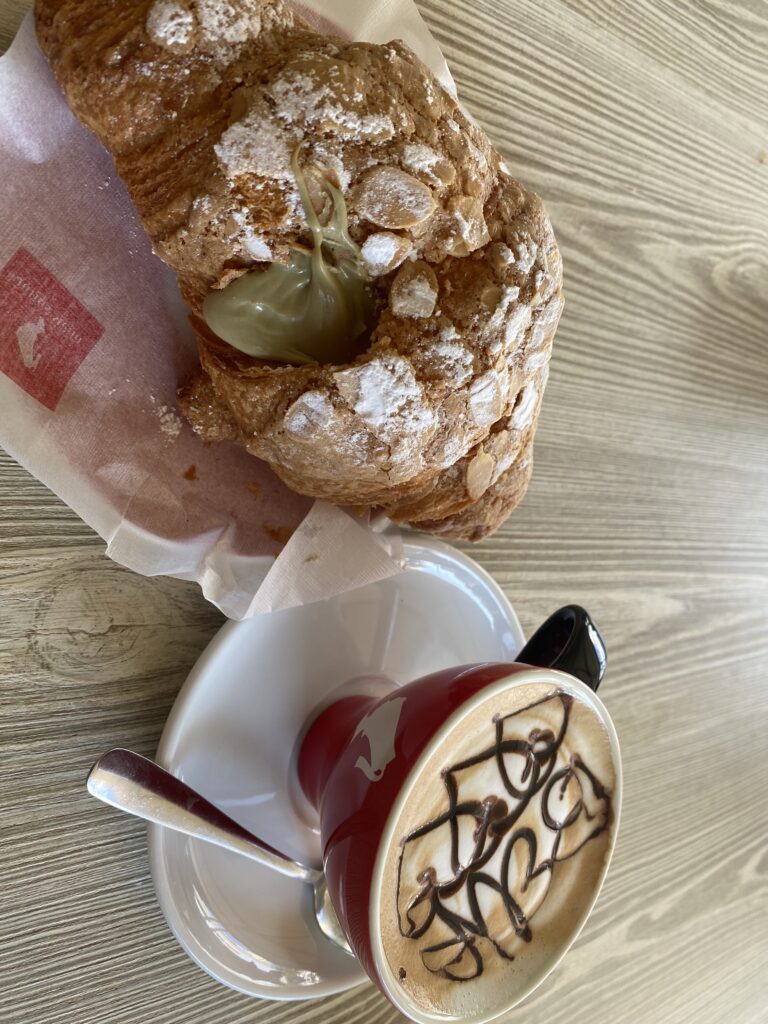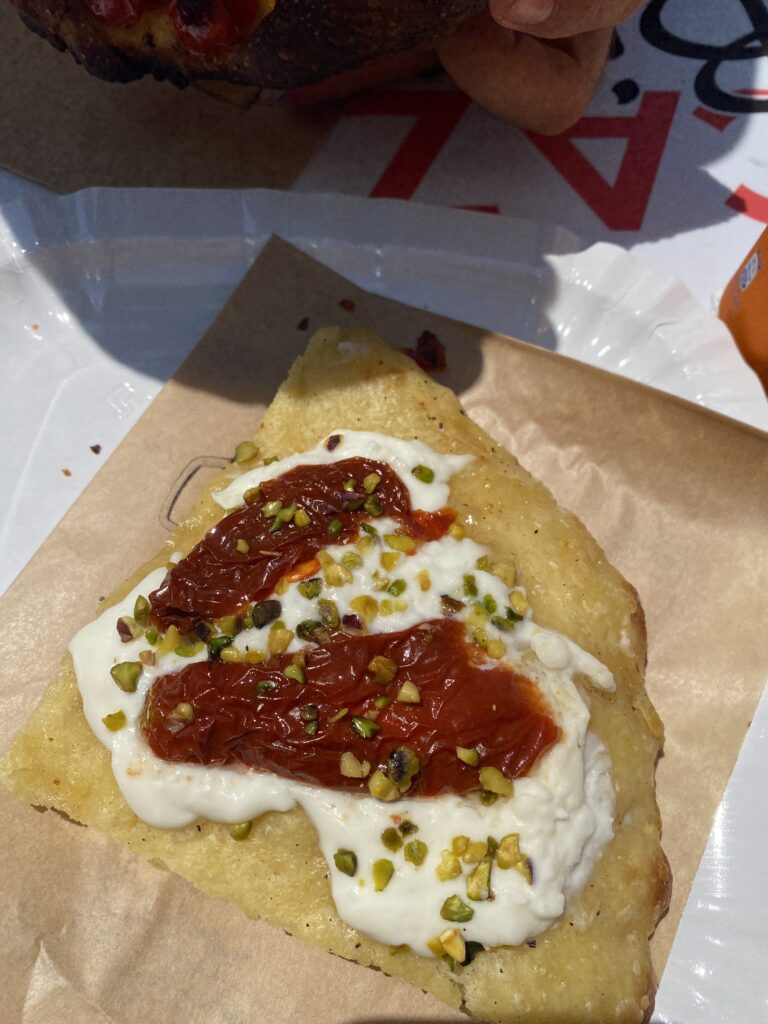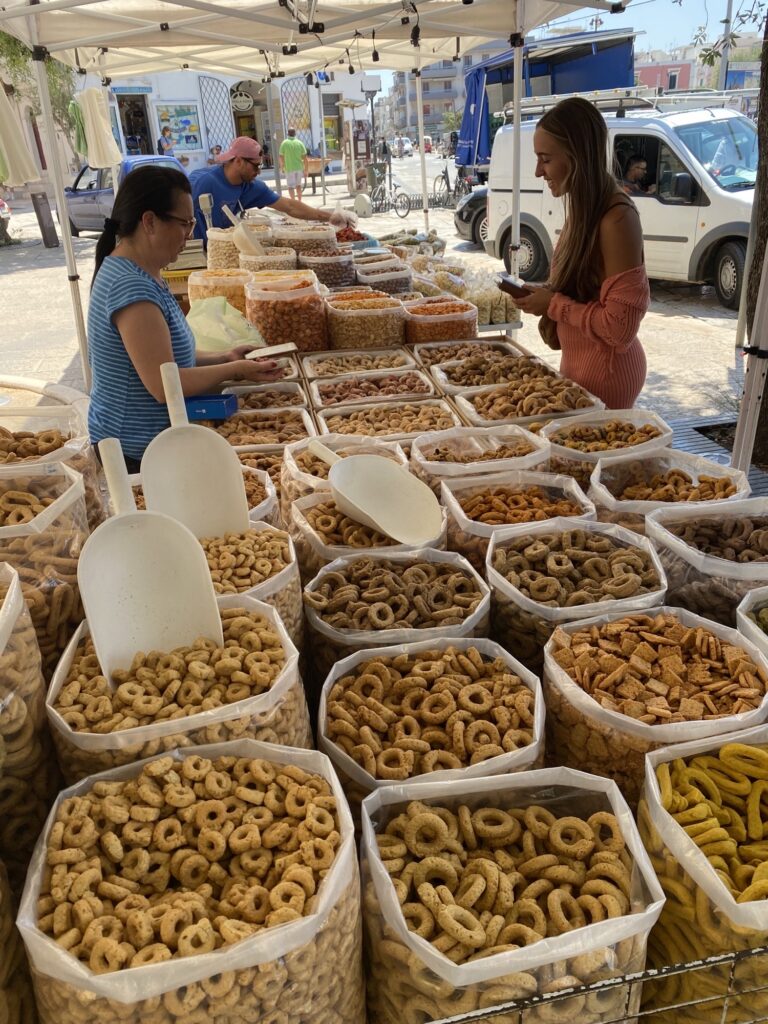
Written by Orianna Soublette
Last year, my Summer of culinary love began upon being reintroduced to the pistachio. Growing up in the U.S., I always enjoyed pistachios as a snack, but I was tragically ignorant to their versatility. When I first arrived in Italy, I learned that I needed to make the switch to dessert for breakfast, which led me to the beloved cornetto al pistacchio. Soon after, Venice gave me my first taste of pistachio gelato. In Abruzzo, I was greeted with a pistachio pesto and shrimp pasta and a mortadella and pistachio pizza. The Pugliesi sprinkled these nuts on top of focaccia and infused them into taralli. In the stone city of Matera, they were stirred into a ragù.

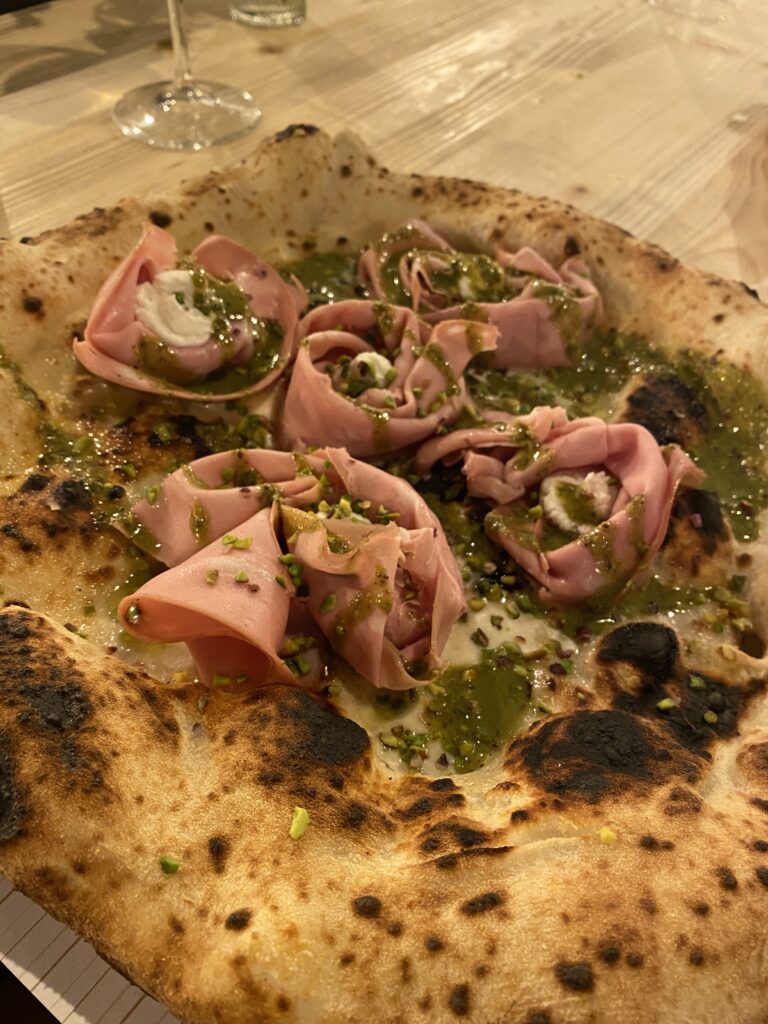
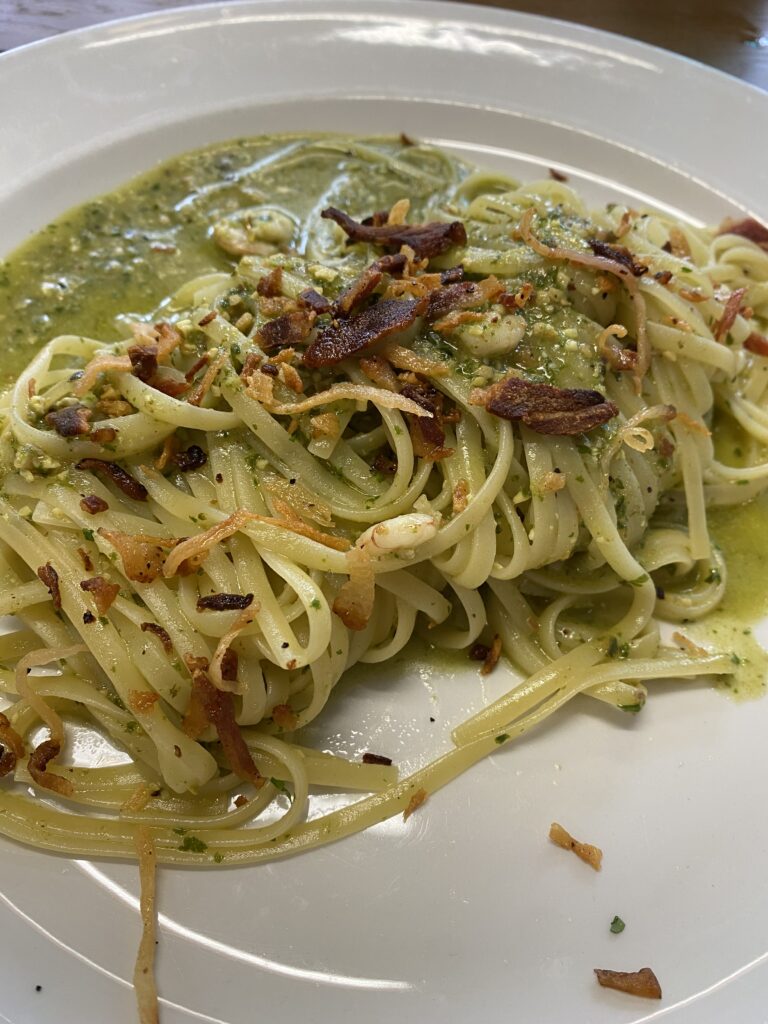
Seeing such a tiny ingredient leave so many footprints around the country sparked my curiosity about its origins. Bronte, a small town at the bottom of Mount Etna in Sicily, is the gold mine of pistachios. It turns out that pistachios were first introduced to Italy when the Romans brought them over from the Middle East. In the 9th century, pistachio trees were planted in Sicily following Arab conquest. Bronte is graced with mineral-rich soil and, come buoni italiani, cultivators treat the harvest of this food like an art. From late August through September, the pistachios are harvested by hand and set out to dry under the sun for three days, making sure to store them inside when it rains and at night to protect them from humidity. The Italian economy earns around 20 million euros per year by selling Bronte pistachios. No wonder the locals call them Smeraldo (emerald)!
After learning about the dedication that went into producing these little gems, I returned to the same conclusion I always do. Everything produced in Italy is done so with the elegance of a paintbrush. From the unique soil to the harvest by hand, Italians effortlessly sprinkle Bronte pistachios onto plates around the world. Food is an expression from the heart for Italians, and these emeralds spell out just one of their many love letters.
